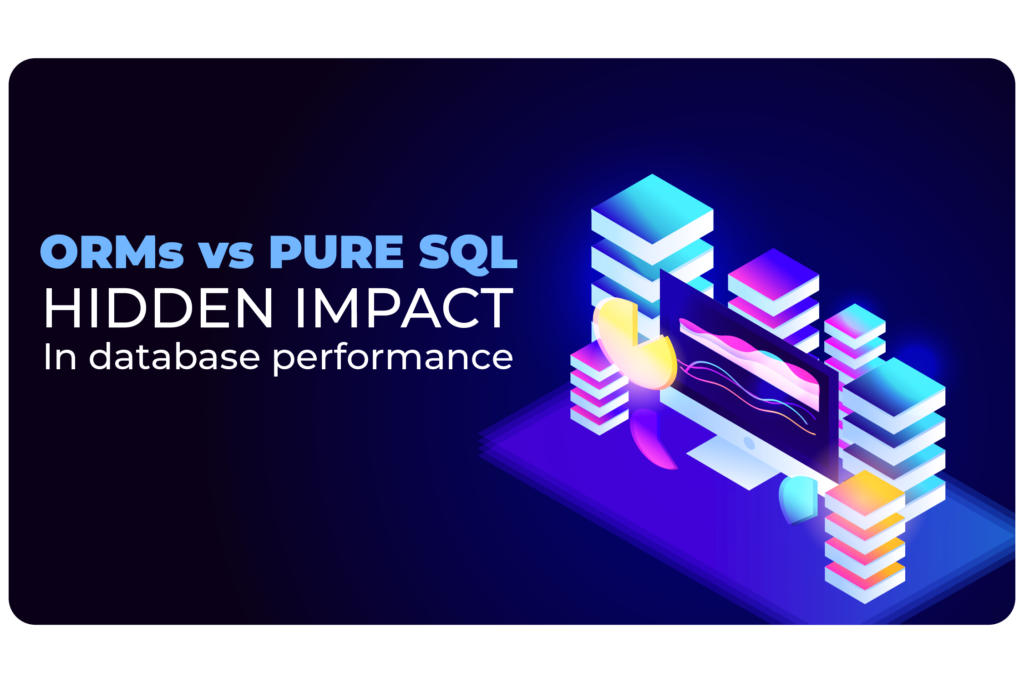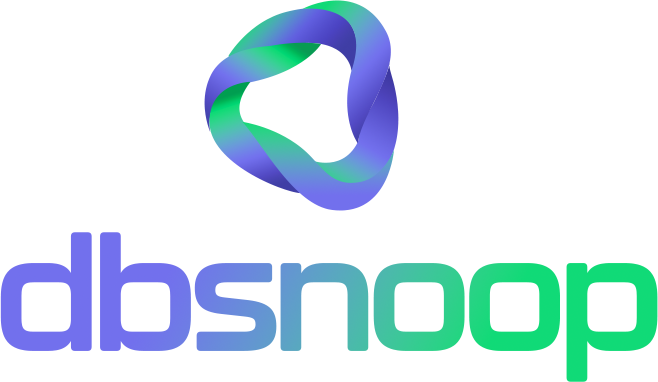

The holy war between the proponents of Object-Relational Mappers (ORMs) and the purists of SQL is one of the most enduring in software engineering. On one side, ORMs like Hibernate, Entity Framework, and GORM promise a productivity paradise: the ability to interact with a relational database using the objects and native language of your application, abstracting away the “complexity” of SQL. On the other, the purists argue that this abstraction is a dangerous black box that hides inefficiencies, generates monstrous queries, and removes the developer’s control over the most critical layer of the application.
The truth, as always, does not lie in the extremes. ORMs are incredibly powerful tools that, when used correctly, accelerate development and reduce the likelihood of security errors. However, their greatest strength, abstraction, is also their greatest weakness. The fundamental problem with ORMs is not that they can generate inefficient SQL; it is that this inefficiency is, by design, hidden from the developer. The code in the application looks elegant and harmless, while under the hood, the ORM might be waging a war of attrition against your database, with thousands of unnecessary queries.
This article offers a technical and impartial analysis of the pros and cons of ORMs, dissecting the most common performance anti-patterns, such as the infamous “N+1” problem, and showing how workload observability is the only way to make peace in this war, allowing teams to enjoy the best of both worlds.
The Case for ORMs: Why They Dominate Modern Development
Before criticizing, it is essential to be fair. ORMs did not become the industry standard by chance. They solve real problems and offer tangible benefits that boost development speed.
- Developer Productivity: This is the main argument. Writing data access logic in Java, C#, or Go is much faster than writing SQL strings. The developer can think in terms of objects and collections, a much more natural paradigm in modern application development. For simple CRUD (Create, Read, Update, Delete) operations, the ORM reduces dozens of lines of boilerplate code to a single method call.
- Database Independence (The Promise): One of the biggest attractions is the promise that, with an ORM, you can switch your database from PostgreSQL to SQL Server by changing just one line in a configuration file. In practice, this is rarely so simple, as SQL dialects and specific features of each database end up leaking through the abstraction, but for most standard operations, the promise holds.
- Security by Default: ORMs are the best defense against the number one security vulnerability: SQL Injection. By default, they use parameterized queries (prepared statements), which separate the SQL code from the user’s data. This makes it virtually impossible for an attacker to “inject” malicious code through a form field, a protection that developers writing manual SQL might forget to implement.
- Type Safety and IDE Integration: By working with strongly typed objects, the developer gains the benefit of compile-time checking and IDE autocompletion. A typo in a column name is caught by the compiler, not at runtime when the query fails in production.
The Tax of Abstraction
The benefits above are real, but they come at a cost. The abstraction of the ORM creates a distance between the developer and the database. This distance hides what is really happening, and it is in this darkness that performance anti-patterns flourish.
The “N+1 Selects” Problem
This is the canonical example of the dangers of an ORM. It is a problem that seems completely invisible in the application code but is devastating for the database’s performance.
- The Scenario: Imagine you have two entities: Author and Book, with a one-to-many relationship (an author can have many books). You need to display a list of authors and the title of each one’s latest book.
- The Innocent Code (Example in pseudo-code):
authors = ORM.findAll(Author.class); // 1 query: SELECT * FROM authors;
for (Author author : authors) {
System.out.println(author.getName() + ": " + author.getLatestBook().getTitle()); // N queries: SELECT * FROM books WHERE author_id = ?;
}
- The Hidden Disaster: The code seems perfectly logical. However, the ORM, to satisfy the author.getLatestBook() call, executes a new SQL query for each author in the loop. If the first query returns 100 authors (the “1” of the equation), the subsequent loop will generate 100 additional queries (the “N”). What should be a single efficient operation turns into 101 round trips to the database. Each of these individual queries is extremely fast (a primary key lookup), so they will never appear in a “slow query log.” But the cumulative overhead of 101 network trips, connection establishments, and query executions can easily turn a 50ms operation into a 5-second one.

Lazy Loading
The N+1 problem is often a symptom of an ORM feature called “Lazy Loading.” Lazy loading is actually an optimization: the idea is not to load related data that you might not need. The ORM only fetches an author’s books when the code explicitly requests them. The problem is that when the code requests them inside a loop, this “optimization” becomes an anti-pattern.
The alternative is “Eager Loading,” where you instruct the ORM to fetch the authors and their books in a single query using a JOIN. But this also has its dangers, as it can lead to fetching a massive amount of unnecessary data if you only needed one field.
SELECT * and Resource Waste
By default, when you ask the ORM to fetch an object (ORM.find(Author.class, 1)), it usually generates a SELECT * FROM authors WHERE id = 1;. It fetches all the columns of the table, even if your application only needs the author’s name.
The Impact:
- Increased Network Traffic: Transferring heavy TEXT or BLOB columns that you won’t use consumes network bandwidth between your application and the database.
- Memory Pressure: The application needs to deserialize this data into objects, consuming more RAM.
- Invalidation of Optimizations: The “covering index” optimization, where all the columns a query needs are in the index itself, becomes impossible. The database is always forced to go to the main table to fetch the extra columns, resulting in more I/O.
Observability Restoring Visibility
The conclusion is not that ORMs are bad. The conclusion is that the invisibility they create is dangerous. The problem is not the ORM; it’s the lack of feedback about what it’s doing. This is where a database observability platform like dbsnOOp becomes the essential tool for any team that uses ORMs. It acts as a translator, showing the real SQL that your elegant application code is generating.
Exposing the N+1 Problem
This is the perfect use case for dbsnOOp. The “slow query log” would never catch the N+1 problem. dbsnOOp detects it instantly in two ways:
- Ranking by Frequency: The “Top SQL” dashboard can be sorted by “Executions per Minute.” The SRE would immediately see the query SELECT * FROM books WHERE author_id = ? being executed thousands of times, even if its latency is only 2ms.
- Ranking by Total Cost (DB Time): The total cost of the query (its latency multiplied by its frequency) would place it at the top of the resource consumers list, even though it is individually fast. dbsnOOp reveals that this “death by a thousand cuts” is actually the system’s biggest bottleneck.
Analyzing the Generated SQL
dbsnOOp captures 100% of the queries executed in the database, including the complete and verbose SQL that the ORM generates. The developer no longer has to guess. They can see the exact query, with its multiple JOINs or lack thereof, and analyze its execution plan directly in the platform. The black box is opened. The team can see that a simple repo.save(object) is actually generating a sequence of SELECT followed by an UPDATE, instead of an efficient UPSERT, and take action to fix it.
Finding the Balance: The Hybrid and Pragmatic Approach
The war between ORMs and pure SQL is based on a false premise: that you have to choose one or the other. The best engineering teams use a hybrid and pragmatic approach, and they use observability to guide them.
Use the ORM for 80% of the Way: For the vast majority of CRUD operations, the productivity and security of the ORM far outweigh its disadvantages. Use it for the day-to-day work.
Drop Down to Pure SQL for the Critical 20%: For the “hot paths” of your application, the queries that run tens of thousands of times per minute, the complex reports, the high-performance batch inserts, do not hesitate to use your ORM’s feature to execute pure SQL (like JdbcTemplate in Spring or FromSql in Entity Framework). This gives you the granular control to write the most efficient query possible, create the perfect index for it, and guarantee performance.
Use Observability as Your Guide: How do you know what your critical 20% are? The answer is in the data. A platform like dbsnOOp is your guide. By analyzing the real workload in production, it objectively shows you which queries are consuming the most resources. These are your candidates for manual optimization. The platform transforms the decision of “when to use pure SQL” from an opinion into a data-driven engineering decision.
Abstraction with Visibility is the Answer
The choice between ORMs and pure SQL does not have to be an ideological war. ORMs are exceptional productivity tools, but the abstraction they provide comes with a visibility cost. Operating an ORM without a database observability tool is like driving a race car blindfolded: you might go fast for a while, but the end result is inevitably a disaster.
By combining the development speed of ORMs with the deep visibility provided by a platform like dbsnOOp, engineering teams can finally have the best of both worlds. They can build features quickly, with security, and, at the same time, have the ability to dive deep and surgically optimize the queries that really matter, ensuring that the code’s abstraction does not translate into a performance catastrophe.
Want to see what your ORM is really doing to your database? Schedule a meeting with our specialist or watch a live demo!
To schedule a conversation with one of our specialists, visit our website. If you prefer to see the tool in action, watch a free demo. Stay up to date with our tips and news by following our YouTube channel and our LinkedIn page.
Schedule a demo here.
Learn more about dbsnOOp!
Learn about database monitoring with advanced tools here.
Visit our YouTube channel to learn about the platform and watch tutorials.

Recommended Reading
- How dbsnOOp ensures your business never stops: This article explores the concept of business continuity from the perspective of proactive observability. Learn how predictive anomaly detection and root cause analysis allow engineering teams to prevent performance incidents before they impact the operation, ensuring the high availability of critical systems.
- Industry 4.0 and AI: The Database Performance Challenge and the Importance of Observability: Explore how the demands of Industry 4.0, IoT, and Artificial Intelligence are raising the complexity and volume of data to new heights. This article discusses why legacy monitoring tools are insufficient in this new scenario and how observability becomes crucial to ensure the performance and scalability needed for innovation.
- Performance Tuning: how to increase speed without spending more on hardware: Before approving an instance upgrade, it is crucial to exhaust software optimizations. This guide focuses on performance tuning techniques that allow you to extract the maximum performance from your current environment, solving the root cause of slowness in queries and indexes, instead of just remedying the symptoms with more expensive hardware.

